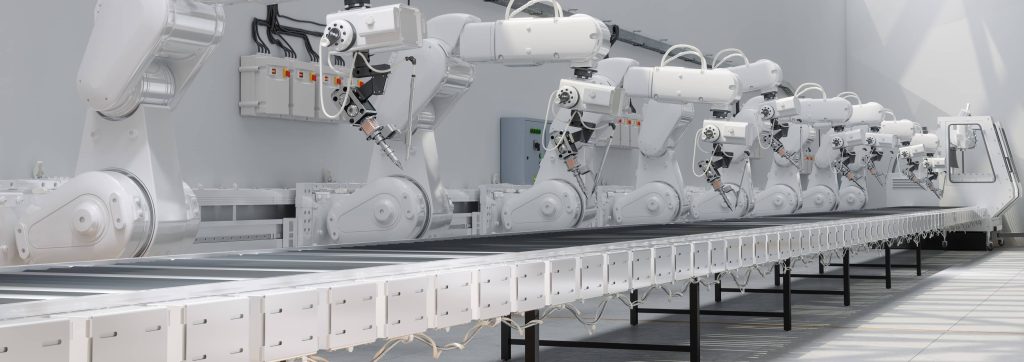Artificial intelligence (AI) and machine learning (ML) are two terms you hear often in the context of recent tech development. People often use AI and ML interchangeably. Though they are related, these two tech specialities are different from one another.
According to Columbia University, artificial intelligence is a broader subject in which computers use logic to perform real-world tasks. Therefore, artificial intelligence (AI) software development focuses on programming computers to perform work and solve problems like a human would.
Machine learning is one approach to AI. It uses algorithms, equations, data analysis and modelling to help computers find and identify patterns. Machine learning (ML) software development focuses on creating systems that can collect vast amounts of data and improve their ability to recognise patterns and make decisions based on them.
Both AI and ML have a broad range of applications, including in healthcare, finance, cybersecurity, government, and business. Companies, in particular, are increasingly relying on artificial intelligence and machine learning software development to improve efficiency, streamline operations, and perform low-skill manual tasks that take up time and limit worker productivity.
Here is a closer look at the benefits and applications of machine learning (ML) and artificial intelligence (AI) software development for today’s businesses and organisations.
The Benefits of AI and ML for Businesses
Why are more firms starting to use artificial intelligence and machine learning? The advantages these technologies bring can vary from industry to industry. Here are some of the benefits offered by these software tools.
- Process automation: Companies can use AI automation tools to complete certain tasks automatically. For example, AI software can collect data from customer surveys and activities and enter it into a customer relationship management platform. Not only does this streamline the data collection process, but it eliminates errors that humans may introduce when entering this information in a spreadsheet or database.
- Increased productivity: Because they are free from time-consuming manual tasks, employees in companies that rely on AI and ML automation can focus on higher-level tasks that bring more benefit to the company.
- Better customer service: AI software can increase the speed of service and improve personalisation for each customer. AI can collect and collate data for individual customers, allowing personalised offers and services. Meanwhile, chatbots and automated forms can provide immediate assistance. Even if these tools can’t solve the problem, they can collect information to streamline communications with a live agent.
- Data-driven decision-making: AI and ML software developers can create systems that collect operational and industry data and use predictive analytics to offer insights to decision-makers. Executives can use this information to make better decisions about the direction and strategies the company should employ going forward.
- Continuous improvements: Artificial intelligence can monitor all aspects of an operation in real time. This makes it easier to spot inefficiencies, errors, and potential problems and make improvements that reduce or eliminate these issues before they disrupt operations. This continuous data stream can also help spot potential problems related to cybersecurity.
A skilled AI and ML software development service can create customised solutions that maximise the benefits for a company by focusing on its exact needs.
Real-World Examples of AI and ML
Here are specific examples of AI and ML software development projects that provide real-world benefits to companies and organisations.
- Human resources: Software can scan employee CVs and applications to find those most qualified for specific positions. In addition to streamlining the process, these tools can take subjectivity out of the process to ensure the best applicants make it to the interview stage.
- Chatbots: Chatbots can use natural language processing (NLP) to interact with customers and clients. Well-designed chatbots can decypher customer queries and solve most basic issues without human intervention. These tools can also use machine learning to continuously improve their solutions’ accuracy.
- Personalised offers: AI and ML tools can learn customers’ preferences based on their search terms, past purchases, and page views on a website. This information facilitates targeted advertising for retail or e-commerce sites. Meanwhile, data from surveys and online activity can automatically personalise insurance offers or highlight specific banking features for customers seeking such services. Personalisation using AI is so common in e-commerce and service businesses that 71% of consumers expect it.
- Computer security: A ML security system learns the standard traffic patterns in a company network. It monitors logins, connections, access, and data flows. If it finds unusual activity, it can alert the IT team and take steps to protect the network and sensitive data.
- Image recognition: Machine learning software can engage in computer vision. In other words, the ML software can process images, learn the traits that objects have in common, and use this data to recognise the same items in unfamiliar pictures or videos. Such tools have applications in image searches, data collection, healthcare diagnostics, and security.
Automated accounting, time-keeping, and document-processing tools also fall into the realm of AI and ML.

Steps in the AI and ML Software Development Process
Though AI and ML software tools focus on a diverse range of functions, the development process is similar for almost all projects in this area. Here are the steps that software developers follow when planning and completing artificial intelligence and machine learning software development projects.
- Define the issue: The first step in any software development process is to define the problem that the company needs to solve or the aim they hope to achieve. The goal can be specific, such as “reducing human error in accounting operations,” or more general, such as “organising information to aid in decision-making processes.”
- Design the solution concept: The developers can then analyze the customers' needs, existing processes, and other variables and come up with the ideal solution that addresses issues and goals without disrupting the client's current operations. The best solution concepts leverage the vendor's expertise and experience to improve their operations overall.
- Choose a system: Different systems are available to AI and ML developers. For example, chatbot development projects would rely on natural language processing (NLP), while data analysis software to aid executive decision-making would rely on trends, forecasting, and predictive analysis.
- Create a rules-based system: ML and AI software development projects start with rules that the system will follow. These rules inform the software on how to select and process information and the steps to take based on the nature of the data.
- Testing and training the model: The next step is to feed data into the software to see if it can complete the expected tasks. This step often involves making changes and debugging the software until it produces results that solve the issue or achieve the goal defined at the start of the project.
- Real-world data: The next step is to assess the software using unfamiliar data. In addition to evaluating the efficacy, the developers can fine-tune the algorithms to avoid anomalies and other issues that could hurt the accuracy or effectiveness.
Once the software gets deployed, the developers can continue maintenance and plan updates that take new variables into account.
Types of AI and ML Software Development Services
Different types of software development services can focus on varying areas of AI and ML. Here are the services you can expect from AI and ML developers:
-
Chatbot development focuses on creating automated customer service software using NLP frameworks. The software is integrated with a website or app, allowing users to interact conversationally with the service using text or voice prompts.
-
Cybersecurity software development automates data collection and network monitoring. AI systems can also be developed to manage credentials and to use things such as facial recognition, fingerprints, or other login authentication factors.
-
Robotic process automation (RPA) software uses AI models to perform basic work processes. RPA development often focuses on automating record-keeping, data collection and analysis, and customer correspondences.
-
Predictive analytics systems use patterns, trends, and statistical modelling to make forecasts about economic, financial, or industry performance.
-
Cloud-based AI solutions are hosted on remote servers, allowing users to access them from any location. Document processing, collaboration, or data collection and analysis software may be created on a cloud platform.
Every company has unique needs, so it may be necessary to hire an AI and ML software development service that creates customised solutions based on your current needs, goals, and problems.
Common Programming Languages and Tools for AI and ML Development
AI and ML programmers use different computer languages. The best coding system depends on the developer’s knowledge and the software’s goals and functionality.
However, many frameworks are specific computer languages, and developers need to understand them if they want to build on existing work to create more-complex AI software. Here are some of the most common languages for AI and ML programming.
-
Python is a flexible language with a massive library of existing code that AI and ML programmers can plug into their projects. Also, most developers learn this system as their first or second coding language in school.
-
C++ is another common coding language that developers learn early in their careers. This language is compatible with a wide range of operating systems. It is also known for its efficiency, which is vital for optimising the complex algorithms required for some AI and ML software.
-
Java is another common language for AI programming. Major companies, including Amazon, use it for some of their processes.
-
R is a data-focused language that programmers use for analytics tools. Its nature as a special-purpose language designed for statistics makes it great at abstracting away some of the complexity programmers encounter when writing code in fields such as statistical machine learning.
-
Lisp was one of the first-ever computer languages. Based on logical problem-solving and calculations, it is very useful for a variety of AI applications due to the convenience offered by its ability to compute with symbolic expressions.
The Importance of Data Quality and Preprocessing in AI and ML
Artificial intelligence and machine learning software recognise patterns and make decisions using available data. The program cannot work correctly if it is fed low-quality data or information from unreliable sources. Worse, it will recognise irrelevant patterns and trends in the data, diluting its accuracy. In other words, when presented with bad data, machine learning software will learn the wrong things.
For this reason, you need software development services that know how to harness quality data and can take steps to ensure proper preprocessing. Preprocessing involves selecting only quality data and putting it in the correct format so that the AI and ML systems can assess it accurately.

The Challenges and Limitations of AI and ML Development
Artificial intelligence and machine learning are powerful technologies. However, they do have limitations, and there are drawbacks that you need to be aware of if you want to deploy these tools in your business.
First, these programs require a lot of computer power. Companies may need to upgrade their systems before they deploy AI software.
Second, both AI and ML software need quality data to work correctly.
Third, predictive models cannot account for every eventuality, so they are not 100% accurate. Because of this, some decision-makers do not trust AI-powered analysis.
Finally, because many of the systems are automated, they can compound mistakes and inaccuracies if their processes aren’t adequately monitored and assessed for errors. The AI will continue making the mistake until someone picks up on it and makes corrections.
Future of AI and ML in Software Development
As with any other type of software development, AI and machine learning programmers build on previous frameworks. Software development services seek to build on past developments. An example of this is deep learning, which aims to teach computers to think intuitively as a human would.
Programmers are also pushing the capabilities of neural network development and cognitive computing, which try to mimic human thought processes and problem-solving approaches.
In the future, these types of AI and ML software may be able to handle more ambiguous problems and deal with the nuances of real-world situations.
Choosing the Right AI and ML Development Partner.
The best AI and ML development partners focus on your company’s needs. Out-of-the-box solutions rarely work when it comes to AI and machine learning. Instead, you should seek development services willing to listen to your needs, help you define problems you want to address with AI or machine-learning solutions, and offer software that addresses these specific challenges.
The best AI and ML development partners aren’t necessarily the ones that offer the most advanced solutions. Instead, they are the ones that go out of their way to understand your needs and create plans to precisely meet those needs, deploying the best solution for you and not just what seems to work for everyone else.

Related Insights










